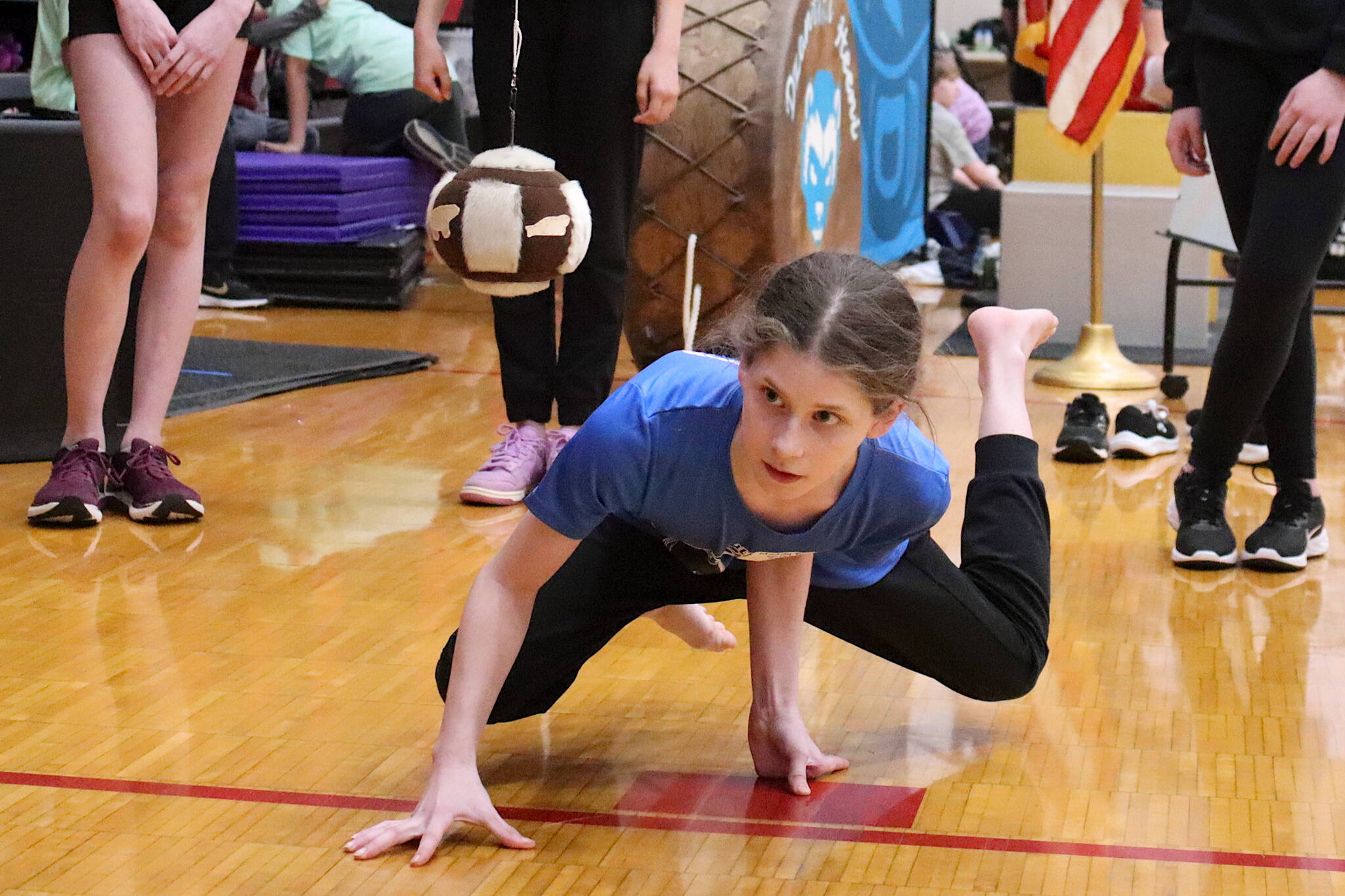Matthew Chagluak says it’s been a couple of years since he’s joined his high school’s wrestling team, opting instead these days for a sport that manages to be more individualistic and communal at the same time.
Chagluak, 17, a West Anchorage High School student, was among more than 250 participants on about 30 student and adult teams from throughout Alaska, the Lower 48 and Canada participating in the seventh annual Traditional Games that started Friday and ended Sunday at Juneau-Douglas High School: Yadaa.at Kalé.
[Results from the 2024 Traditional Games: Middle School | High School | Open]
After displaying seemingly perfect form Saturday on the Alaskan high kick — leaning on one hand while using one foot to kick a small ball suspended directly above — Chagluak said he learned the technique of extending nearly the entire length of his body to make the kick from others and is willing to share with others at Native Youth Olympics events such as the Traditional Games.
“Wrestling is a sport where you want to win every single time,” he said. “But with NYO you’re helping anybody that asks for help. So if I’m competing in the one-hand reach and someone’s having trouble with it I’d be over there helping them out, giving them tips. So it’s the camaraderie. It’s not as competitive.”
Chagluak finished first in the high school boys’ competition, striking the ball when it was suspended 90 inches above the ground, topping the second-place finisher by 14 inches. He also was the top finisher in the boys’ archery competition.
Kyle Abbott, 20, a student at the University of Alaska Southeast, said he started participating in the Traditional Games as a high school freshman six years ago with little knowledge of the skills involved for the various events.
“Just slowly getting more and more into the Games you meet so many people who you just try to pick up things from — other people’s forms — and you kind of figure out your own thing,” he said.
Participants in middle school, high school and open divisions competed in 12 events, including three variations of high kicks, two types of distance jumps, archery, a wrist carry to see how long a person can bear their own weight with one arm, and a seal hop involving moving across the floor in a push-up position (which differs for male and females).
While competing in the events was a rare or first-time experience for some participants, for many others it’s as common as “conventional” school teams sports as they take part in NYO and other events throughout the year.
“I’ve lost count of how many times I’ve done the dené stick pull in my life,” said Daniel Rodgers, an eighth-grade student on the Chickaloon team, after a victory in that event against a competitor from Klawock. The event has competitors stand foot-to-foot as they try to wrestle a greased wooden stick — symbolizing a slippery salmon — from the grip of the other person.
Rodgers, participating in his sixth Traditional Games, was named the top boys’ competitor in the middle school division after winning the Alaskan high kick and Inuit stick pull events. He said some of his abilities come from competing frequently against much older students at competitions involving communities where schools tend to be for grades 7-12.
“I’m used to going against 12th graders,” he said. At the Traditional Games “it’s a little bit easier because I’m going against sixth, seventh and eighth graders.”
There are different “circuits” for the events that have different competitive moods, said Maio Nishkian, a Palmer resident coaching student participants from Chickaloon for her second year.
“There’s school circuits and I think those can be more competitive mentally,” she said. But the tribal circuit, including the Traditional Games, “really focuses more on the Indigenous values aspect. So people will be competitive, but it’s always more important to be supporting other athletes. It’s always more important to be a good sport.”
But being supportive of others and a good sport doesn’t mean there isn’t a fierce sense of competition for some participants — when it comes to the challenge of meeting their own goals.
Among the dominant winners of the weekend was Tessa Anderson, a Mt. Edgecumbe High School student, named the top female high school athlete. Among the individual events she won was a seal hop — essentially moving pushups — of more than 121 feet across the JDHS gymnasium floor, beating the next-place competitor by more than 30 feet. But afterward she said her goal was to cross the entire length of the 92-foot-long court and then make it back to the halfcourt line before collapsing.
“It’s not where I wanted to be, but I know I tried hard,” she said.
Results and recordings of the full three-day event are available at traditionalgames.sealaskaheritage.org.
• Contact Mark Sabbatini at mark.sabbatini@juneauempire.com or (907) 957-2306.

